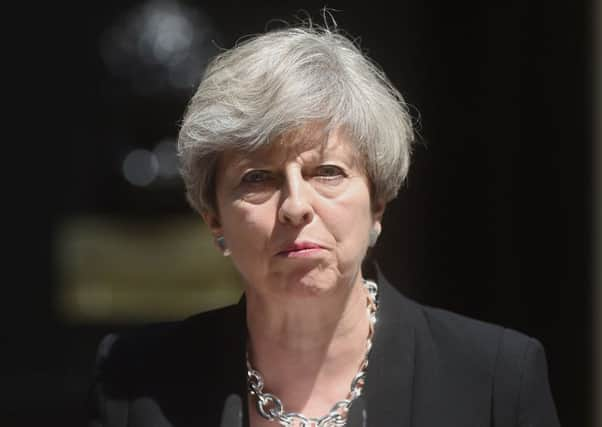What can the SNP teach Theresa May about minority government?


Just 24 bills were announced by Her Majesty at the State Opening of Parliament, and a sizeable chunk of those were to do with the practicalities of leaving the European Union.
Such was the paucity of the programme, the Queen was able to have a quick change and be at Royal Ascot for the first race.
Advertisement
Hide AdAdvertisement
Hide AdTheresa May was unable to secure a deal with the controversial Democratic Unionist Party in time for the already delayed set-piece event, and so she went ahead regardless.
While the prospect of governing without a majority is a shock to the Westminster system, in Scotland we are no strangers to it.
The SNP ran Scotland without a majority (the Scottish Parliament was designed in part to prevent one) between 2007 and 2011, and are currently doing so again after the election of 2016.
Here is how Theresa May could use the Scottish example to prevent her nascent minority government from collapsing.
The numbers
The most important thing when in government without a majority is keeping on top of the fine margins involved.
As the price of the DUP gets mooted as being as high as a further £2bn in extra support for Nothern Ireland, the prospect of governing alone must be ever more tempting for Theresa May.
It is worth remembering that the DUP will, at worst, abstain on the content of the Queen’s Speech when parliament votes on it next week.
A staunchly unionist party would be unlikely to ally with Labour in any circumstances, but with Jeremy Corbyn’s controversial behaviour during the troubles, Arlene Foster’s party will never take any action that results in Mr Corbyn being given the opportunity to form a Government.
Advertisement
Hide AdAdvertisement
Hide AdThis was not dissimilar to the scenario that Alex Salmond found himself in as First Minister at the head of a minority Government.
Rejecting some SNP policies outright, and even blocking ministerial appointments or demanding resignations, could have led to the collapse of the government and an election.
That might be something Labour would relish, but the SNP and the Lib Dems would probably rather do anything else than campaign again.
With a two-thirds majority required to dissolve parliament, that almost accidental brinkmanship can aide Mrs May.
Unlikely bedfellows
The Prime Minister might not have anticipated having to throw her lot in with the DUP before the election, but it is the reality which now confronts her.
That said, the Tories were open to the notion before the 2015 election, and have relied on their support before.
It is perhaps further afield that Mrs May will find herself looking.
She may find herself with allies in the Labour party leadership for her pursuit of a Brexit which ends free movement of people.
Advertisement
Hide AdAdvertisement
Hide AdThat was the case during the SNP’s first term as a minority government, when, as Labour are fond of reminding them, they often relied on Conservative support to pass major legislation.
Annabel Goldie, then Tory leader, was able to wring concessions from the SNP government on issues such as funding for town centres.
As the SNP themselves found out, iron discipline is key if a minority government is to function, with the whips some of the hardest working MPs in the Commons.
Any dissenting opinions will need to be kept in check, all for the sake of party unity of course.
Appearance is key
One of the most important things that a minority government can do, especially in the early stages, is to ensure that the right optics are displayed.
With the SNP having just a one seat lead over Labour in 2007, there was still the possibility that a coalition involving one or more unionist parties could keep Alex Salmond out of Bute House.
But with the former SNP leader alighting from a helicopter to announce his intention to form a government, he began to look almost immediately like a First Minister-in-waiting.
Though she was criticised for doing so, Nicola Sturgeon continued to effectively brush off losing her majority in the wake of the 2016 Holyrood election.
Advertisement
Hide AdAdvertisement
Hide AdWith the departure of her two key advisers, Theresa May needs help more than ever to ensure that her nascent government isn’t mired in bad publicity.
Looking Prime Ministerial used to come easy to Mrs May, according to the conventional wisdom, but she has been increasingly rattled since losing her majority.
While Mrs May relies on Ruth Davidson for advice on all things Scotland, she could do worse than consider the example of one of the Tories’ sworn enemies in Scotland as she continues to try and govern effectively.